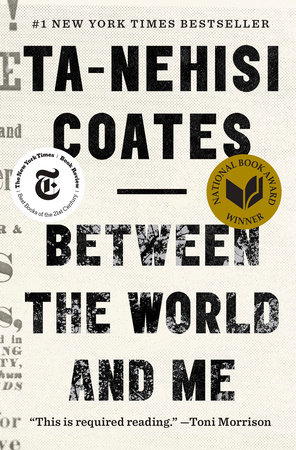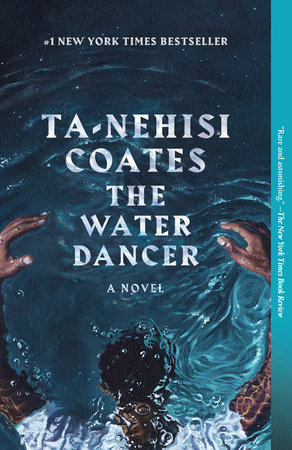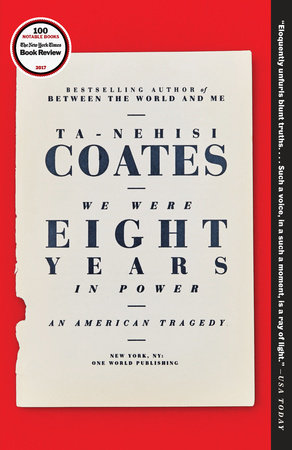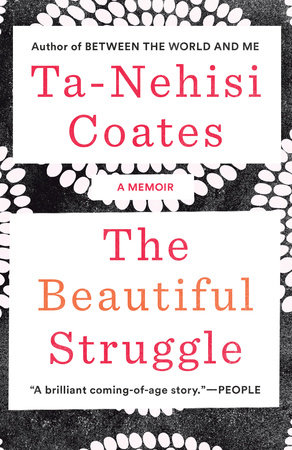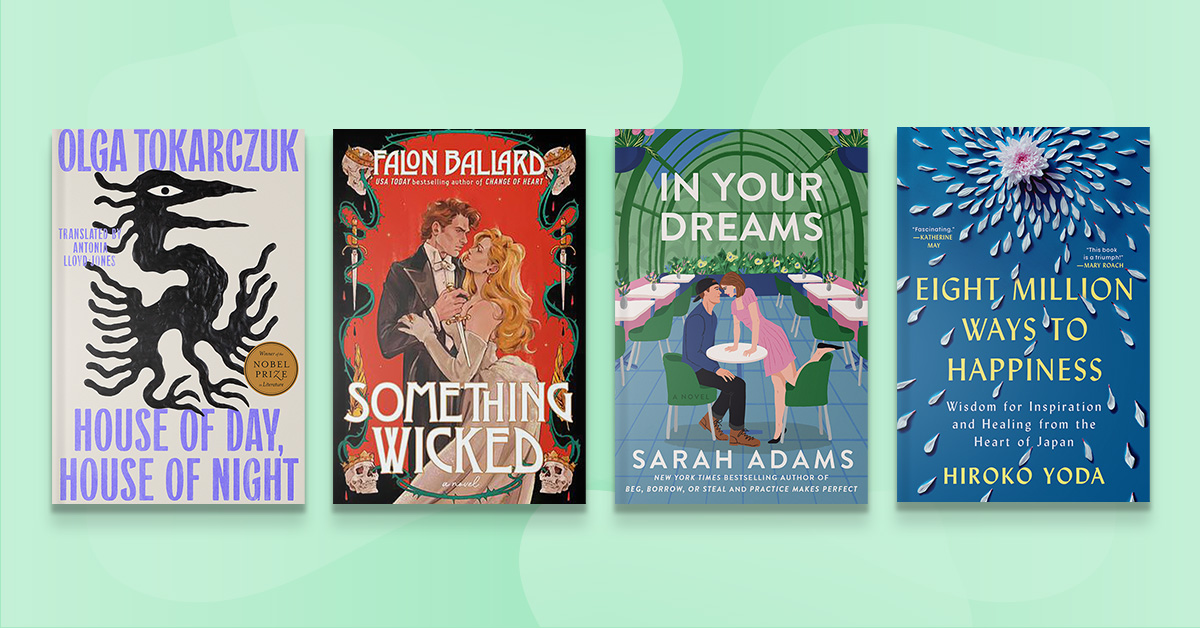Features
An Oral History of Between the World and Me
The team behind the book recalls the making of Ta-Nehisi Coates’s modern classic.

We spoke to the team behind the book to gather their memories of the publishing process.
Ta-Nehisi Coates’s Between the World and Me was published in 2015 in the wake of the Charleston massacre of nine Black Americans, slain in their church by a young white supremacist. The book explores the way America’s fraught history of racism lands on the bodies of its Black citizens through Coates’s words to his teenage son. In 2020, new readers looked to the book after the murder of George Floyd and many other Black Americans. It won the National Book Award and has been on the New York Times bestseller list for over 100 weeks. It was adapted for HBO in 2020.
The speakers are Greg Mollica (Art Director), London King (Publicity), Greg Kubie (Publicity), Katie Tull (Marketing), Leigh Marchant (Marketing), Gloria Loomis (Agent), Chris Jackson (Editor/Publisher of One World), and Ta-Nehisi Coates (Author).
This interview was conducted in 2020. Transcripts have been edited for clarity.
In 2013, Ta-Nehisi was a journalist for The Atlantic and his profile was on the rise. He was invited with other journalists to the White House to speak off the record to then president Barack Obama.
Ta-Nehisi Coates, Author: I was reading The Fire Next Time [by James Baldwin]. And I was at that time writing really critically of Obama. So for these off-the-record meetings he’d call journalists in and then you would get to make your criticism and he would answer you, and you all would go back and forth. There were no other Black reporters in there. In fact, the President and I were the only Black people in the room, and we kind of got into it about something.
I left the meeting and The Fire Next Time was on my mind.
I walked from the White House all the way to Union Station and called Chris [Jackson]. And I said to Chris, I think this is a moment, something is happening. It feels like we’re right on the precipice of something. I don’t know what it is but a book like The Fire Next Time should exist right now. How could it be that Baldwin did this years ago — how could it be that nothing has come close to this? Why does this book not exist in this moment?
Chris Jackson, Editor: Ta-Nehisi [and I have] this conversation or a version of it with every book, which is: okay, how do we create something [that] feels original and not derivative? When he called me, talking about writing something like The Fire Next Time, immediately I got worried — like oh my God, lots of books have tried to be The Fire Next Time redux and Baldwin is so seductive because every writer with a facility for language thinks they can duplicate him. Or some writers are drawn to emulating him because of his attitude and public persona. But Baldwin’s power is really in his ability to combine all these different things. Original reporting and beautiful language, but also a real grasp of the historical situation. And a powerful element of memoir. All those things went into Fire. All in this compressed little book. He wrote personal narrative, but it was not a heroic personal narrative — he grounded it in his actual body and humanity and all his idiosyncratic specificity.

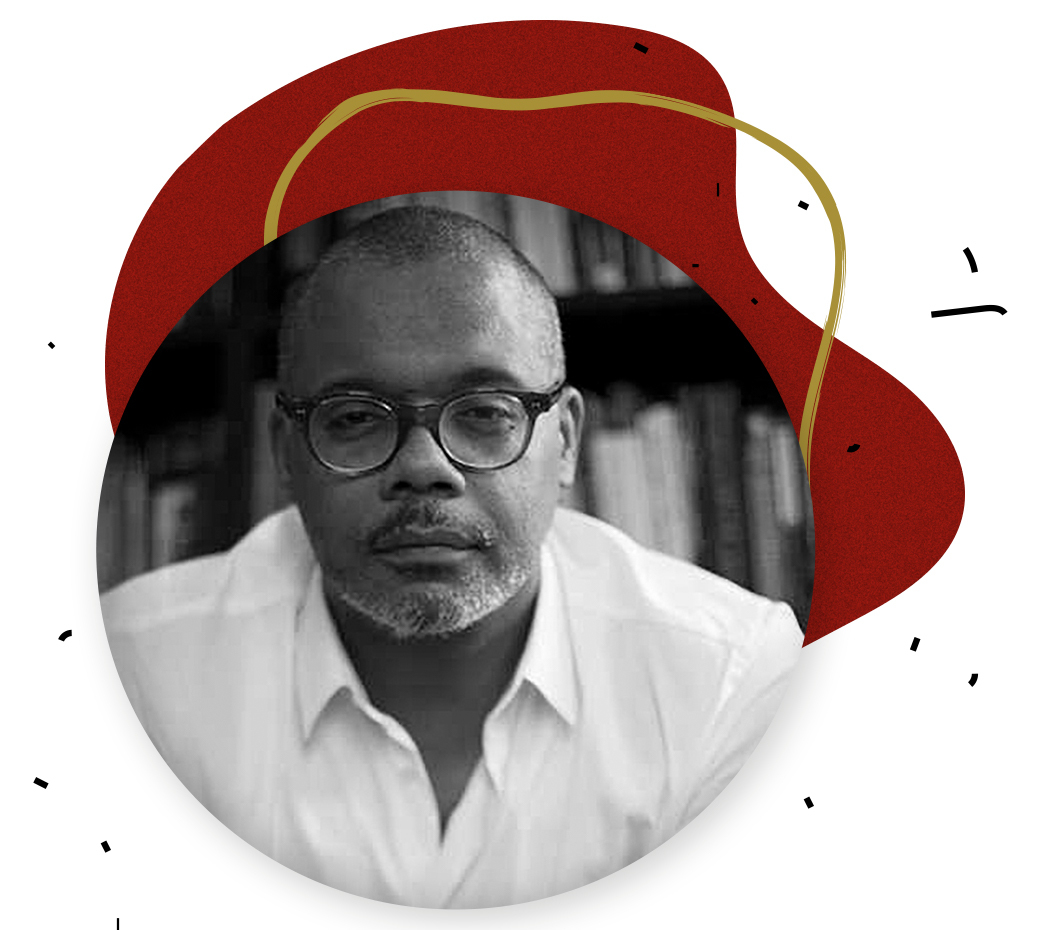
TNC: What I love about Chris, he’s a hard editor. I’ll never forget what he said to me on that call. He said: Listen man, there’s been a lot of people that tried to do this. There’s been a lot of The Fire Next Time attempts. I believe what he said was: The road is littered with people who tried to do this. But listen, let me tell you what he said after that — he said: But I think you can do it. I think you alone can do this.
CJ: It worried me — whether or not it could be done. But at the same time, I felt like: well maybe — maybe this is actually someone who has the range to do it.
GL: I liked [Ta-Nehisi’s] honesty and his modesty because it was not false at all. It led to his great openness to everything and his keen observation because he didn’t have a set view of the world. He was just open and ready to tell the story.
TNC: I have an editor who understands where I’m coming from, who is about my age, my era, a Black man. That’s not something that my ancestors, as writers, had. So I’m in a very, very unique position. My experience with editors — and honestly my experience with friends — is that as hard as they should be on you about where you are and what’s going on, they should be that avid in their belief in you too.
Based on some of the writing Coates was doing at the time, he had a contract for a book of essays about the Civil War. Eventually, his research and interest in the Civil War would turn into his bestselling novel The Water Dancer. But after his confrontation with Obama and conversation with Chris, he switched gears and started working on what would become Between the World and Me.
Katie Tull, Marketing: Ta-Nehisi reads a lot of nonfiction. He reads a lot of stuff that you would have never heard of, stories that come from library archives. When he was doing the research, [for the book of essays] I think that’s when he discovered something more personal.
Gloria Loomis, Agent: Originally the book was different. It was more research on the Civil War, then it shifted to this story, this poem for his son — this powerful, very personal book
TNC: Between the World and Me didn’t start like The Beautiful Struggle or The Water Dancer. It started with a feeling. It’s like, you meet somebody and you fall in love. I meet my wife, fall in love. We should have kids together. I don’t know what the kid’s name is, I don’t know what the kid’s personality is, I don’t know anything, except that there should be a kid in the world at this moment. That’s it. This is a good moment to have kids, that’s it. [laughter]
It feels like we’re right on the precipice of something.
—Ta-Nehisi Coates
GL: He used to go to write at the Hungarian coffee shop. A number of writers used to go there. And he would go there every day when he lived in the neighborhood.
TNC: I would work down at the Hungarian Pastry Shop, which is over in Morningside Heights. At that point, I had moved back up to Harlem. Later, I had a little office that I would work in. I had one of those latte machines with the pods. Oh man. I would go and make these lattes with these pods and I would go back into the office and I would write until I feel like my head would physically hurt. I had to go lay down.
I had made this rough outline and put numbers next to every paragraph in the draft. And instead of like a normal human being going and cutting and pasting, I physically retyped the entire manuscript. When you run it through your brain again you say things better, you understand what I’m saying? That’s actually improving the language.
The writing’s such a physical activity. It’s not just mental, the typing actually does matter. So I had to physically do that shit man, and I’m high on caffeine and everything. I think I got it maybe done a week or two before I was supposed to go away for the summer.
Meanwhile, my Atlantic essay “The Case for Reparations” is blowing up. So I’m killing myself on this new thing while everyone is talking about “Reparations” like this is the greatest essay ever, wow, dada-dada-da! I’m killing myself while this is going down.
I think I actually said to Chris, what do you need to feel comfortable and feel like you actually accepted this manuscript? He said well okay, give it one more crack. And I said okay. Anyway, I got it done, sent it to Chris.
He was like okay, all right, I feel comfortable with this. This is accepted. That was the point where I was like: I’m going to have a Between the World and Me book.

Once the first draft was in hand, there were still some big changes to come…
CJ: I thought it was great. I thought it had so much power. But it was sort of broad and it needed to be directed because, as a piece, it still wasn’t sure of its own voice and it lacked affection for the reader. It was very oratorical. It was like someone giving a lecture to a faceless audience. And therefore, it didn’t have the kind of intimate, interior emotional quality that you end up with in Between the World and Me — making a letter to his son was absolutely the transformative thing that happened.
TNC: Between the World and Me, for all of its argument, is a work of feeling. The person has to feel the emotion I had, the feeling first, before I had the argument.
That process, making it and trying to do it. I mean — that is magic. That is me as a six-year-old kid again. That’s like sitting around playing with some Legos, because you’re trying to build something. You’ve got your little Erector Set. Does this work? Can you do this?
That to me is the gold right there. That’s the beauty of it.
Greg Mollica, Art Director: The original title was “Tremble for My Country”; we had looked at old James Baldwin covers, like The Fire Next Time, and civil rights posters for design inspiration for the cover.
So the design process started there. I had a large rubber stamp made of the title at a little old stamp shop in the east village so that the typography would look authentic and timeless.

Then the title changed to Between the World and Me. Back to the stamp shop. And it was funny because Chris and Ta-Nehisi are so close and they work so well together and Ta-Nehisi just said to Chris, look Chris, I know you love “Tremble for My Country,” but we have to change this title.
And there was a little back and forth about that, but when Ta-Nehisi explained the reason why it should be “Between the World and Me,” Chris couldn’t argue. And it was powerful.
It’s based on a Richard Wright poem — called “Between the World and Me” — where Wright describes a lynching scene. Wright, the voice of the poem, is walking out into the woods when he stumbles upon the body of a lynched victim. It reads:
And one morning while in the woods I stumbled
suddenly upon the thing,
Stumbled upon it in a grassy clearing guarded by scaly
oaks and elms
And the sooty details of the scene rose, thrusting
themselves between the world and me. . . .
So Ta-Nehisi emailed Chris the poem and was like, this is it, this is going to be our title! And so then the visual for the cover sort of shifted. Chris and I wanted to show trees in a way, so we did, we developed a bunch of layouts with trees, tree textures but in a subtle way. So in the final version of the book, there is an image of trees embedded in the debossed letterforms. It’s faint. It’s not immediate, but then it appears at second glance.

TNC: Chris wanted to subtitle [the book] by the way. He was concerned that Between the World and Me was not enough, and that people would look at it and they would be like, I don’t know what this is.
CJ: Yeah. I mean you have to admit that Between the World and Me doesn’t really say much.
TNC: Yes, it does! Clearly, it does!
CJ: …I mean, in the end, obviously I agreed that it would not have a subtitle.
TNC: You agreed to not let it have a subtitle. You didn’t agree with the decision to not have a subtitle.
CJ: That’s true. [laughter] But yeah, I mean, this was part of a longer, ongoing — I would say decade-long — dispute we’ve had about titles.
TNC: I will defend him on that—the reality of it is it did get a subtitle, and the subtitle was from Toni Morrison.
In a hugely gratifying moment, Toni Morrison blurbed the book and wrote a ringing endorsement.
London King, Publicity: Toni Morrison said that Ta-Nehisi took over the intellectual role that James Baldwin left when he died. And to watch Ta-Nehisi, someone who is very confident, I think, in his writing, to be so amazed and humbled by it — and truly, truly honored — was just really beautiful to see.
CJ: It was kind of late in the game because once we got the book done, we wanted to publish it as soon as possible. Plus Ta-Nehisi hates blurbs. Hates giving them, hates soliciting them. We sent it out to a couple people.
TNC: Did we?
CJ: Yes. And we got blurbs from all of them.
TNC: Did we?
CJ: Yes.
TNC: And I only wanted one, was that what happened? Did I say I only want one?
CJ: Once we got the Toni Morrison one, we were like: that’s all we want. The Toni Morrison one was kind of a cold solicitation. It wasn’t like they had some kind of deep relationship. Which made it even more special to me because it wasn’t like, oh this is her favorite, or her former student or a friend of a friend, or whatever.
TNC: We had never met or talked or anything.
CJ: But she was obviously already a fan, I assume.
TNC: I don’t know.
CJ: Just what a quote though. What a quote!
TNC: And you’re talking about somebody who knew James Baldwin. It’s not like we sent the note to her saying hey this is our attempt to be like James Baldwin. Did we?
CJ: No, no, no. I think just: “You’re a major figure to both of us. If you could give us a quote it would be amazing.” It’s a dream blurb.

TNC: It was extremely, extremely gratifying. And obviously at that point we didn’t know how far it would go. But I’ll speak for myself: I felt like the creative work was done at that point. So whatever happened with the book, our foremost Nobel laureate got it.
GM: It was coming down to the wire for production, getting the full jacket prepared for the printer. The incredible quote by Toni Morrison was added at the very end, so we had to sort of quickly add that. It kind of worked out. This red jarring quote worked out well with the design.
Once the writing was complete, the rest of the team got to read it:
CJ: There’s a time when, as an editor, the manuscript stops being a problem to solve and becomes a work you’re just reading. Little by little it becomes a thing that you’re just reading as a reader. Slowly your identity changes from editor to reader.
That’s also where it’s not a cause of anxiety, it’s a cause of excitement. It’s not something I’m afraid to show people. It’s something I want to show people, desperately. When you cross that line, it’s an amazing feeling.
LK: I remember being on the subway, and all of a sudden I just realized that my world had changed. The way that I had viewed the world had changed. His writing cut right through me.
There’s a time when, as an editor, the manuscript stops being a problem to solve and becomes a work you’re just reading.
—Chris Jackson
CJ: I remember it was a Friday and I gave it to our associate publisher, Tom. Honestly, at this point, I loved it. It’s such an idiosyncratic book though, I had no idea what he’d think. And I remember I ran into Tom at the coffee machine that Monday morning and he told me he’d read it immediately. And he said something that I thought was kind of ambiguous.
He said it was as if the book was written in acid. And I smiled and nodded and Tom walked away but I was like: what does that mean? Is that a good thing or a bad thing? [laughter] But then he later explained, he felt like every sentence had a searing quality to it. And then more feedback started coming and everyone was just blown away by it. I was actually kind of stunned by how immediate and universal the response was.
Greg Kubie, Publicity: When I finished Between the World and Me, I mean, really, after reading the first five pages of that book, I knew we had something special.
On June 17, nine Black Americans were killed in the Charleston church shooting. Suddenly, it was more important than ever to get Coates’s book into the world.
LK: We were supposed to publish in October, and Greg and I had put together this huge tour, huge media campaign. Then, all of a sudden, the Charleston shooting happened and we decided to drastically accelerate the schedule so we could publish on July 14.
In publishing, we all feel that words can change society. And we truly believed in Ta-Nehisi, we believe in the words that he’s saying, and we believed in the message he was putting out there — and felt so passionately about making sure that others did as well. Still, to do it so quickly was pretty amazing.
I’ll never forget that moment of feeling like: this is what publishing was made for. This is what our work was made for. This is what we all strive to do with the books that we work on — try to get people to respond in a way that can make change.
Once the book was released, Ta-Nehisi was launched further into the limelight with a big tour and national media attention.
GK: A big sign to me that we were moving into different territory was the first event that we did for Between the World and Me. When [his memoir] The Beautiful Struggle published, Ta-Nehisi told me that he’d be thrilled to get 20 people to come and see him talk. But by the time we did our first event for Between the World and Me, I’m pretty sure this church in Baltimore was filled with at least 500 people. I think that was shocking for him to see as well.
CJ: It was a Black church but it was a very mixed-race group of people, and I thought that was kind of just an interesting dynamic. The event had a kind of solemnity, it really did feel like it was momentous, that we were opening the door. I mean, we were just starting.
When Ta-Nehisi wrote “The Case for Reparations” he did a college tour after, and there were sold-out rooms and students hanging out of windows just to listen. That was the beginning of a kind of passionate following for his work. Around that time, I remember one afternoon: We were walking back toward Random House from lunch and this older Black man stops us and he was just like, thank you brother, and then kept walking. Actually, a couple of people stopped us, because I remember thinking: okay this is different. That kind of reaction from a magazine article — like when does that happen?
KT: Ta-Nehisi was really just becoming this light in publishing. I felt like it was like we were seeing what people saw when they saw Toni Morrison. We were watching that happen in real-time, I think. Everything that’s followed is just an example of that.
TNC: When I went on tour, every stop I had to sign all of these books. At first, there were like 50 books. And then I got to Seattle and there were like 1,800 books. I was like holy fuck. And I sure enough sat there and signed 1,800. It was crazy to me that anybody would [care].
I am extremely grateful for the audience I have. Beautiful, beautiful, beautiful, beautiful thing. I would not give that up. But I never expected, and I’m not really built in such a way for it to be a comfortable experience.
GK: It’s my job to publicize Ta-Nehisi’s books, but in order to do that effectively and responsibly, I also have to keep Ta-Nehisi whole. So that means knowing his limitations and the principles that are important to him. And we stick to them. It’s very important for us to make sure that Ta-Nehisi is present in the culture in the way that he wants to be present.
LK: I think, with Ta-Nehisi, he had strong ideas on what media he would and would not do, and we wanted to take that in consideration.
GK: People were very interested in speaking with Ta-Nehisi at that point. We had a cover story in New York Magazine. We had Fresh Air. He got a one-on-one interview on Meet the Press, which at the time, was the kind of treatment that only presidential candidates were receiving.

LK: Ta-Nehisi is not one to sit down and listen to the same questions over and over again and want to give the same response over and over again. So we wanted to make sure that whatever conversation he had, it struck a chord with both him and others.
GK: When you’re working with someone like Ta-Nehisi, who writes with such precision, you really feel like you have to get it right and represent the work responsibly.
Leigh Marchant, Marketing: For our marketing launch, we wanted to take advantage of Ta-Nehisi’s role as a writer at The Atlantic at the time and built a major partnership with them, where we ran a full-page ad, tablet, and digital ads. We followed that launch with advertising in the following weeks in The New York Times Book Review, online at NYT.com, a heavy general online campaign, and more. We did a ton of outreach on social media — using lines from the book that readers were reposting and sharing everywhere. We also worked really closely with our bookselling partners — created lots of materials for them to use and share with their customers and in their stores. It was that dream campaign, where there was a groundswell of support from our bookselling and advertising partners from the beginning — based on Ta-Nehisi’s brilliant writing — and it just continued to grow and grow from there.
Looking back at the book and its impact five years later…
TNC: The thing you have to understand is the first version of Between the World and Me was not successful. The second version was not successful. The third kind of was like okay, I think we got it.
And as painful as that always is, I always learn so much, man.
I think, especially for young writers, they see the finished thing and they think, how did that happen? I’m never capable of doing that. And they don’t understand all the failures, all the notes you get from your editor telling you this totally does not work at all. They don’t get to see that. But that’s really where all the magic is. It’s not in the finished thing. It’s in how it’s done.
GK: I’ve learned so much from Ta-Nehisi. He’s had a profound effect on the way that I view American history and American culture.
GL: Between the World and Me takes the reader into the life of a particular man, living in a particular life in society, and opens the reader’s eyes in a way, with… I wouldn’t say tenderness, because the stories and the fear is so ugly and frightening. But, certainly white people who read it had their minds opened a lot. It was able to do that in ways that very few other books have.
LK: The way he speaks is the way he writes. His honesty in his writing is the honesty that he brings to people. It’s not prescriptive writing. This is not Ta-Nehisi trying to tell you how to live your life. This is pretty much, let me show you what this world is and then the audience needs to take away from that what they will.
GK: What always sticks out to me about Ta-Nehisi — and I think this gets lost sometimes because he is a thinker who has amazing vision — is just that he’s a beautiful writer. And I think that gets lost in people wanting to think of him as a public intellectual, maybe wanting him to be an activist. He is a writer. And this was an amazing book.
That’s really where all the magic is. It’s not in the finished thing. It’s in how it’s done.
—Ta-Nehisi Coates
GL: I’m filled with pride and amazement, and I’m delighted that this writer could give so much to the world, without any conscious objective of: I want to write a bestseller. This was an honest display of what he felt in his heart, genuine fear for his son, his beloved son. And that honesty of emotion is on the page. There’s no false puffing-up. There’s no cynicism.
GK: One of the truly gratifying things about Between the World and Me is to see how it continues to inspire and engage readers. After our initial launch, we worked with our academic team to get the book adapted at high schools, colleges, and universities — and Ta-Nehisi continued to give lectures nationally. This, plus the perpetually urgent message of the book, has continually brought new readers to what is now a truly landmark publication.
CJ: There are millions of people for whom these books have been essential and powerful and transformative. It’s not necessarily because Ta-Nehisi’s offering a prescription for utopia.
It’s because they feel like finally something really resonates with their experience, articulates something that they didn’t have a language for on their own. I think that is incredibly powerful, and that leads to whatever action you’re going to take in your individual life, but it starts with: can I actually say the thing that I didn’t have language for before?
That’s why I think Between the World and Me remains such an important book for people who are approaching these moments of awakening or confrontation with the world around us.
